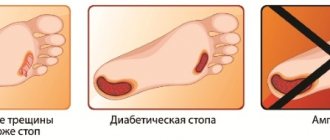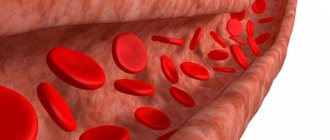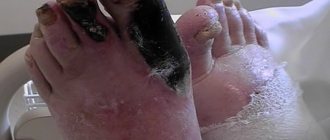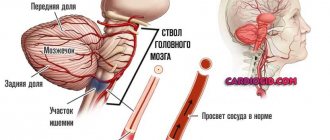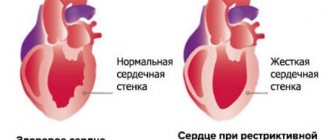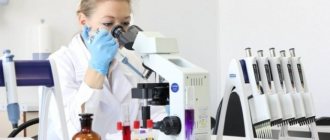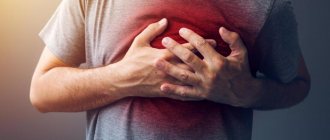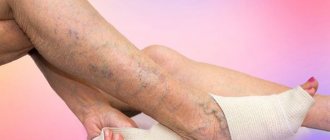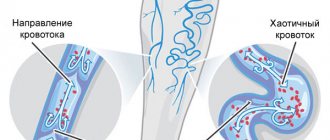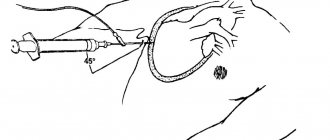Every girl dreams of her legs looking beautiful. However, the manifestation of varicose veins sometimes spoils the whole picture. The lower limbs are often covered with red or brown spots due to varicose veins. This disease does not only affect women, it also affects men, but, as a rule, they are not very bothered by it. But the female half of the population loves to wear dresses and skirts, the length of which does not hide the beauty of their legs. It is very unpleasant that it can be overshadowed by red spots on the legs due to varicose veins, which can be treated by visiting a phlebologist.
Why does red pigmentation appear on the legs?
Varicose veins are a widespread problem among modern people. The causes of the disease are most often hereditary factors and lifestyle. Unfortunately, varicose veins cannot go unnoticed; they cause the patient a lot of pain and discomfort, as they spoil the aesthetics of the legs. Swollen veins begin to be clearly visible on the skin, which may acquire a bluish tint, and red and brown spots often appear on the legs.
The appearance of such symptoms of varicose veins indicates that the patient has been developing varicose veins for a long time and is experiencing complications. Spots on the leg of different colors occur as a result of the fact that the weakened walls of the blood vessels no longer withstand the daily loads on the lower extremities and begin to burst or receive microcracks. As a result, multiple subcutaneous hemorrhages are formed that need to be treated. The appearance of different colored spots is accompanied by:
- swelling;
- itching;
- peeling of the skin;
- pain;
- burning;
- dry skin;
- weakness in the legs.
Hemorrhages affect the structure of the skin, it weakens its elastic properties, becomes noticeably thinner and more transparent. This is why red, brown and even blue spots are clearly visible on the legs.
Red spots on the legs with varicose veins require treatment, because the later you seek help from a doctor, the more difficult it is to help the patient without surgical intervention. Hemorrhages under the skin form large hematomas, which are difficult to eliminate; it’s not even a matter of aesthetics. Under the skin, hemorrhages unite into red spots of increased area, blood moves much more slowly through damaged vessels, and accordingly, first clots and then blood clots form. Varicose veins are complicated by thrombophlebitis. As a result, trophic ulcers appear on the patient’s legs, which are very difficult to treat, and if proper care is not provided, the patient may lose his lower limbs through amputation.
Blue and red spots on the legs indicate bruises or the development of varicose veins
Drug treatment
If redness is detected in the area of the extremities due to varicose veins, the doctor prescribes drug treatment to stabilize the patient’s condition and prevent further development of complications. Since hemorrhages under the skin are associated with loss of tone and fragility of blood vessels, the problem can be dealt with with the help of venotonics.
Properly selected medications restore vascular tone, prevent the formation of blood clots and remove swelling from the legs. The attending physician may prescribe Venarus or Detralex to patients. The drugs are taken in courses, the duration of one course can be several months.
If the disease has been identified at an early stage, the patient is prescribed ointments such as Troxevasin, Antistax, Lyoton, etc. They can be used as the main or auxiliary element of treatment.
If varicose veins are accompanied by itching and peeling, local medications can be additionally prescribed, for example, Fenistil, which effectively relieves skin irritation.
The hidden danger of varicose veins
Often, individual dots and small spots on the legs form in young people who are confident that no varicose veins can be scary for them. But any manifestations on the skin of a red tint or brown with blue, if there have been no injuries, cannot appear for no reason; in 99% of cases this is varicose veins.
The first manifestation of varicose veins should alert a person; if the disease has not been treated, the condition has not been corrected, then at first one red spot will appear, then there will be many of them, and over time they will cover all areas of the lower extremities. A change in the color of these spots, the appearance of additional pigmentation, blue dots - all this means that varicose veins have entered the stage of an advanced disease; the disease requires immediate consultation with a doctor.
Reasons for appearance
Redness of the dermis appears in the fourth stage of varicose veins. The causes of the problem are considered to be progression of the disease, lack of timely professional help, or ignoring the need for treatment.
An advanced disease leads to blockage of the lumens of the veins with blood clots, followed by a lack of oxygen reaching the tissues. Insufficiency of the element provokes the problem of focal pigmentation of the skin.
Spots with varicose veins are formed under the influence of the following features:
- for diseases of the cardiovascular department and anomalies of its development;
- for diabetes mellitus;
- in case of excess body weight, including obesity of various degrees;
- traumatization of the lower extremities;
- infectious diseases;
- during the period of gestation.
How to treat red spots with varicose veins?
Of course, red spots on the leg with varicose veins appear instantly. They slowly spread throughout the lower extremities, so paying close attention to the appearance of your veins and skin will help identify the disease early on. This is very important, because the more advanced the condition, the more difficult it will be to treat.
If the patient develops blue spots, or brown ones, if they begin to merge into single large hematomas, then, most likely, surgical intervention cannot be avoided. The decision about surgery will be made by the vascular surgeon.
Principles of treatment and strict adherence to rules
Treatment of spots on the legs is aimed at eliminating the varicose veins themselves and generally strengthening the immune system. The main principles for the patient should be:
- proper nutrition, where proteins, fats and carbohydrates are balanced in every meal;
- therapeutic diet - avoidance of pickles, canned foods, sausages, smoked meats and sweets;
- normalization of metabolism in the body;
- physical therapy and gymnastics classes;
- control of the daily routine, healthy, full sleep;
- prevention using traditional medicine recipes against varicose veins;
- strict adherence to doctor's orders;
- timely administration of medications.
Symptoms
Dermal pigmentation disorders develop over a period of time and begin with redness. Stagnation in the epidermis refers to the beginning of the process. The main symptoms of the disease are represented by the following deviations:
- swelling of the skin of the legs and swelling of the tissues;
- the presence of reddish spots that itch obsessively;
- pronounced shine and smoothness of the dermis on the legs;
- the formation of small bubbles that spontaneously disappear after some time.
In the absence of treatment and further development of the disease, secondary symptoms are added to the clinical picture:
- increased itching;
- degeneration of redness into a brownish tint;
- increased skin density in problem areas;
- fluid protruding through the dermis.
Use of medications
The patient will definitely have to take medications that will be directed to:
- to improve blood composition;
- strengthening vascular walls;
- activation of the cardiovascular system;
- decreased blood viscosity;
- eliminating red spots on legs.
Traditional medicine indirectly contributes to the treatment of varicose veins from the inside, and fully copes with the removal of external signs. Ointments, gels, lotions, creams, masks, tinctures, often made independently, help strengthen blood vessels and veins, improve blood flow in the body, saturate dry skin with moisture, and combat pigmentation on the legs.
Surgical intervention and prevention: compression garments
If the phlebologist decides that surgery is necessary, then you cannot refuse, since red spots on the legs with varicose veins are a very dangerous symptom and must be treated. In addition, there are now modern methods of hardware removal of spider veins and swollen veins using laser coagulation. This is a painless procedure that does not require hospitalization of the patient.
Compression underwear also helps to increase the tone of the veins, as it accelerates blood flow in the legs due to the pressure created inside; accordingly, this is a good prevention of thrombophlebitis.
An integrated approach to the treatment of red spots with varicose veins
It is an integrated approach to treatment that can eliminate varicose veins, improve the patient’s quality of life and preserve the beauty of the legs. It is important to remember proper nutrition, healthy sleep and rest, choose the right clothes and shoes, and do not give up gymnastics and moderate exercise.
To achieve the full effect, you can take antihistamines, or smear the skin with creams and ointments aimed at eliminating skin inflammation. You can make moisturizing masks. As a result of this, the red spot on the thighs, ankles, calves or shins will gradually “fade”, and then completely disappear, just as bruises disappear after blows.
What to do if the spots are blue?
The condition of the veins in the legs should be a concern if blue spots appear. This indicates the neglect of varicose veins; the longer the patient ignores this phenomenon, the worse it will be treated. The appearance of blue spots indicates that varicose veins are in a deep stage, often due to oxygen starvation in the lower extremities. Spots of this color can provoke anemia, thrombophlebitis and trophic lesions of soft tissues.
Drastic and timely treatment is necessary. Drug therapy aimed at eliminating inflammation of the vascular system and strengthening blood vessels and veins will help get rid of blue spots.
A good remedy for eliminating blue spots on the legs is hirudotherapy. It consists of applying leeches to the affected areas of the skin, which inject hirudin, which thins the blood and has an anti-inflammatory effect, under the skin. Hirudotherapy should be carried out in aesthetic medicine clinics, and not at home from dubious specialists.
After the procedure, the leeches disappear on their own, then the skin is lubricated with a special product and the patient rests for some time. Already after 7-8 sessions, significant improvements are observed, the blue spots become noticeably paler, and the legs stop hurting, there is lightness, the ability to walk and do your favorite things without difficulty.
An excellent way to eliminate blue pigmentation is hardware treatment. These are a variety of galvanic procedures, electrical stimulation, magnetic wave therapy. However, only a doctor who has test results and pictures of the venous network can prescribe them.
While varicose veins develop without treatment, the spots will not disappear, but will only increase in size and deteriorate in color. It is necessary to eliminate the cause of the appearance of blue spots on the skin, and not their cosmetic manifestation. Therefore, treatment and diagnosis of the disease should be under the supervision of a surgeon and dermatologist. Only by treating varicose veins can you get rid of spots on your legs.
How dangerous are they?
The course of treatment should begin immediately if a negative manifestation appears in the lower leg area . The symptom can lead to serious complications. For minor skin lesions, you should also consult a doctor. He will be able to conduct all the necessary tests that will allow him to prescribe an effective course of treatment.
When the skin is red, the patient additionally feels discomfort due to itching and pain in the joints. Periodically, exudate may be released from the formations. In this case, a person’s risk of developing a trophic ulcer increases.
